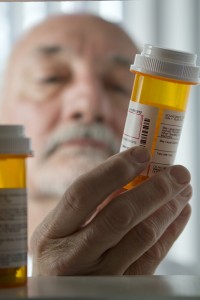
Major depressive disorder (MDD) is unfortunately a relatively common condition in children and adolescents. Depression is estimated to affect 2% of pre-pubertal children and 5-8% of adolescents (Son et al, 2000). As you might expect, depression has a significant negative impact on the development, functioning and risk for suicide in individuals affected, as well as potentially making their lives thoroughly miserable. At this stage it is also important to realise that we are referring to clinical depression rather than the depression and “moodiness” that people may think of when they consider the usual dramas of adolescence; like when Tarquin from JL Direction Vamp’s hair isn’t quite right. Not that these emotions aren’t also important of course.
Suicide is thankfully reasonably uncommon in childhood and early adolescence with estimates of the annual rates of suicide worldwide of 0.5 per 100,000 in females and 0.9 per 100,000 in males aged 5−14 years. Sadly, this increases to 12.0 and 14.2 per 100,000 between the ages of 15−24 years in females and males respectively (Pelkonen et al, 2003).
Antidepressant medication is often used to treat childhood depression. However, concerns about the possible risks of increased suicidal behaviour among children and adolescents treated with antidepressants has led to warnings being placed on some drugs. Individual antidepressants differ in their characteristics, including in their effects on the brain’s neurotransmitters. As such, it is possible that suicidal behaviour risk for individual medications may also differ.
This blog reviews two recent studies in this area:
- A retrospective cohort study of 36,842 children aged 6 to 18 years, who were new users of antidepressants, designed to compare the risk for medically treated suicide attempts among new users of various antidepressants (Cooper et al, 2014)
- A propensity score-matched cohort study, which aimed to assess whether the risk of suicidal behavior is related to antidepressant dose, and if so, whether risk depends on a patient’s age (Miller et al, 2014)

Suicide risk increases noticeably in adolescence and young adulthood
Methods
Cooper et al
In order to investigate possible differences in antidepressants in risk of suicide in children and adolescents treated with antidepressants, the authors of the study to be considered observed a cohort of children who were newly prescribed selective serotonin reuptake inhibitor (SSRI) and serotonin-noradrenaline reuptake inhibitor (SNRI) antidepressants. They reviewed their medical records for all suicide attempts in order to compare the risk for various antidepressants with that of fluoxetine (the antidepressant currently recommended for the treatment of depression in children and adolescents).
The cohort observed included children aged 6 to 18 years enrolled in Tennessee Medicaid between 1995 and 2006 (Medicaid is a social health care programme in the USA, for families with low income and resources).
Medicaid data inspected included enrolment records, outpatient and inpatient claims and records of filled prescriptions.
The authors identified children and adolescents who had been newly prescribed the antidepressants fluoxetine, sertraline, paroxetine, citalopram, escitalopram or venlafaxine. The individuals identified had not been prescribed antidepressants during the prior 365 days and had no evidence of major mental illness other than major depressive disorder.
Medically treated suicide attempts were defined as self-harm associated with a stated or inferred intent to die. Suicide attempts were defined as self-harm associated with death.
The presence of these end-points was identified from records for inpatient, emergency department and outpatient encounters as well as records from hospitalisation in medical and psychiatric facilities.
The relative-risks of suicide attempt for current use of antidepressants compared with fluoxetine were then calculated.
Miller et al
162,625 patients aged 10 to 64 years with a diagnosis of depression who were starting an SSRI were assigned to one of two dose categories:
- Modal (most common) dose
- Higher than the modal dose
Patient’s data were examined for evidence of deliberate self-harm (measured with ICD-9 codes).

The U.S. Food and Drug Administration has twice issued black box warnings about antidepressant use in children, adolescents and young adults
Results
Cooper et al
- The cohort included 36,842 children who were new users of antidepressants during the study period
- The mean age of the children included was 14 years
- 59.3% of the cohort were female
In the year preceding the observation period:
- 47.4% of children included had a diagnosis of MDD
- 25% had a diagnosis of attention deficit hyperactivity disorder
- Other common disorders identified included conduct disorder and anxiety
Approximately 10% of the children included in the study had previously been hospitalised in a psychiatric facility and 2.9% had had a previous medically treated suicide attempt.
- 419 cohort members had a medically treated suicide attempt, including 4 cohort members who completed suicide
- The mean age for cohort members who attempted suicide was 15.4 years at the time of the attempt
- The rate of suicide attempt for children and adolescents being treated with antidepressants therefore ranged from 24.0 per 1,000 person years to 29.1 per 100 person years
- For current users of sertraline, paroxetine, citalopram, escitalopram and venlafaxine, the adjusted rate of suicide attempts did not differ significantly from that of current users of fluoxetine
- However, children and adolescents who were prescribed multiple antidepressants had a higher risk for medically treated suicide attempts (Adjusted Relative Risk 1.70, 95% Confidence Interval 1.10-2.62) than did those who were just prescribed fluoxetine
Miller et al
The author’s found that deliberate self-harm was twice as common in people aged 24 years or younger who started on SSRI therapy at higher than the modal dose than those who started on SSRI therapy at the modal dose.
The authors suggest this corresponds to about one additional act of deliberate self-harm for every 150 patients treated with high-dose therapy.
The study did not find any significant problems with suicide risk in people taking the normal modal dose.

Cooper et al found no evidence that suicide risk differed for commonly prescribed SSRI and SNRI antidepressants
Conclusions
Cooper et al
The authors therefore concluded that in a cohort of 36, 842 children and adolescents, there was no difference for risk of suicide attempt among individual antidepressant medications compared with fluoxetine.
They felt that the relatively large cohort, who were diverse in terms of social and demographic factors, made the study’s results more robust. The authors also felt that the increased risk for suicide attempt in children prescribed multiple antidepressants was most likely an indication of increased risk due increasing severity of depression. It seems reasonable to assume that children being prescribed more antidepressants are likely to have more severe depression and be at greater risk for suicide.
Miller et al
The authors concluded that children and young adults shouldn’t be started at high doses of SSRIs and that patients starting SSRIs should be closely monitored.

Miller et al remind clinicians to carefully monitor all patients starting antidepressants, especially young people, for several month
Limitations
Cooper et al
The records identify those who had filled prescriptions for antidepressants and not necessarily patients who are taking the medications. However previous studies have indicated that records for filled prescriptions have ≥90% association with patient medication use. However, it is likely that at least some of the children were not taking the antidepressants prescribed to them, or at least not taking them as prescribed, and that these numbers are impossible to determine from the data collected in this study.
As the authors themselves note, the study focused on medically treated suicide attempts or death. It will therefore not include suicide attempts that did not result in medical treatment or suicidal thoughts. While some may consider these aspects “not as serious”, perhaps obviously, there is a much higher risk of completed suicide in people with suicidal thoughts or previous suicide attempts. Whether these risks are present for different antidepressants will not be covered in these data.
The study only looks at risk compared between different antidepressants and does not identify the risk for suicide attempts of antidepressant users compared with non-users.
The study only investigated those registered through Medicaid i.e. with low income or resources. It is likely that low income or lack of economic resources impacts risk of suicide and any further research should include a wider cross-section of society for more valid results.
Miller et al
Propensity scoring is a method that has become increasingly popular in medical research and is now used in many observational studies. It aims to balance the characteristics of individuals receiving different treatments, but it’s no magic bullet. It has some advantages over randomised controlled trials as the population studied is by default more of a real-world sample, but unlike RCTs we cannot be certain that the propensity score method will account for both measured and unmeasured characteristics (such as the presentation of acute psychiatric illness).
Miller et al have carried out a solid piece of research and done what they can with the data at their disposal, but we can’t be certain that the observed increases in self-harm are solely a result of the high doses of antidepressants that people were taking. Another way of looking at it would be to say that high dose antidepressants are a marker of young people with severe mental health problems and thus it is the underlying health problem and not the drug therapy that is associated with an increased risk of self-harm.

The NHS issued more than 50 million prescriptions of antidepressants in 2012
Discussion
The Cooper et al study found that there was no difference between antidepressants for risk of self-harm in young people unless multiple antidepressants were being taken. Some parallels might therefore be seen between high dose SSRI increasing rates of self-harm and multiple antidepressants increasing rates of self-harm, giving us reason to worry about any young person starting antidepressants.
As you might expect, it’s not this straightforward. The Miller et al study looked at claims data for self-harm and for medication. As we’ve discussed, this isn’t necessarily evidence that the medication is being taken. Secondly, if a young person is being started on high dose or multiple antidepressants, it isn’t for fun. It’s more likely that that young person has more severe depression and is at higher risk for self-harm anyway. While this is of course of significant concern, it doesn’t necessarily follow that the medication is causing the severe symptoms and risk that were present in the first place.
Miller et al’s conclusion that young people shouldn’t be started on high dose antidepressants and that anyone starting antidepressants should be monitored is a good one, but isn’t necessarily news (see Geddes et al, 2009). Young people aren’t normally started on high dose antidepressants, which is why these doses are called “high”. Any physician prescribing these doses is likely to have a good reason and will no doubt monitor anyone they think is at sufficient risk to warrant such a dose carefully anyway. And should anyone everyone starting antidepressants be monitored carefully? Well yes, although monitored is perhaps a slightly harsh way of putting it. They are clearly experiencing mental distress severe enough to warrant medication and as such they should be kept an eye on for medical reasons and for human concern for their well-being. Because again, while this is research and for ease of analysis we refer to statistics and numbers rather than people, these are people and their distress is real and their suffering should be our concern.
If any antidepressants or any dose of antidepressants in particular increase the risk of attempting suicide in children and adolescents then it is vital that we know about it. From the Cooper et al study it would seem that compared with fluoxetine, there is no difference between other SSRI and SNRI antidepressants in this risk. It does not tell us if antidepressant treatment in general increases children’s risk attempting suicide or if antidepressants actually treat depression in children, although it wasn’t designed to. The Miller et al study may have addressed this in potentially showing that high dose antidepressants increased the rate of deliberate self-harm in young adults, although these results may only be applicable in less than ordinary circumstances where risk would be higher anyway. We should also keep in mind that antidepressants are one possible treatment for depression and where talking treatments have been shown to work (another study, for another time), they should be used in concert.

There are a number of safe and effective treatment options for young people with depression
If you need help
If you need help and support now and you live in the UK or the Republic of Ireland, please call the Samaritans on 116 123.
If you live elsewhere, we recommend finding a local Crisis Centre on the IASP website.
We also highly recommend that you visit the Connecting with People: Staying Safe resource.
Links
Cooper WO, et al. Antidepressants and suicide attempts in children. Pediatrics 2014;133:204−210 [PubMed Abstract]
Miller M, et al. Antidepressant dose, age and the risk of deliberate self-harm. JAMA Intern Med 2014; ePub ahead of print [PubMed Abstract]
Son SE & Kirchner JT. Depression in children and adolescents. Am Fam Physician 2000;15(62):2297−2308 [PubMed Abstract]
Pelkonen M & Marttunen M. Child and adolescent suicide: epidemiology, risk factors and approaches to prevention. Paediatr Drugs 2003;5(4):243−265 [PubMed Abstract]
Geddes JR, Barbui C, Cipriani A. Risk of suicidal behaviour in adults taking antidepressants. BMJ. 2009 Aug 11;339:b3066. doi: 10.1136/bmj.b3066. [PubMed abstract]
If you need them, The Samaritans’ contact details can be found here. They help people with suicidal thoughts and intentions everyday. You don’t have to suffer alone.

New evidence on antidepressants and suicide risk in children and young people: Major depressive disorder (MDD)… http://t.co/wg71tmvcdC
Great blog today from @hullodave about 2 new cohort studies on antidepressant use & risk of self-harm in young people http://t.co/UAZhV8hS4g
Antidepressants and self harm in young people. I go through two studies for @Mental_Elf. http://t.co/WNAoUT3qv3
@hullodave @Mental_Elf Interesting read thankyou
Mental Elf: New evidence on antidepressants and suicide risk in children and young people http://t.co/ctcd9Gt55Y
New US cohort study finds no evidence that suicide risk differs for commonly prescribed SSRI & SNRI antidepressants http://t.co/UAZhV8hS4g
No difference between antidepressants for self harm in young people? Higher risk with high doses? Me for @Mental_Elf http://t.co/WNAoUT3qv3
New study finds that high starting doses of SSRIs increase suicide risk in children & young people http://t.co/UAZhV8hS4g
RT @Mental_Elf: New study finds that high starting doses of SSRIs increase suicide risk in children & young.. http://t.co/PTu5GD0rx5 @CCHRUK
The NHS issued more than 50 million prescriptions of #antidepressants in 2012 http://t.co/UAZhV8hS4g
@Mental_Elf thanks for sharing! I’ve highlighted you on my @RebelMouse http://t.co/lesNk9VkZO
Antidepressants and young people with major depression. A risk for self harm? I look at two papers for @Mental_Elf http://t.co/WNAoUT3qv3
@hullodave @garwboy @Mental_Elf wont even bother – did do nothing orthodox medicine for 13 years until I reached 30 and damage is done.
New evidence on antidepressants & suicide risk in children & young people @Mental_Elf http://t.co/bjYzo3akXh With new “knee clutcher”!
Last time today. Antidepressants and risk of self harm in young people. A review of two new studies for @Mental_Elf http://t.co/WNAoUT3qv3
RT @Mental_Elf: A timely reminder to monitor all patients starting antidepressants, especially young people, for several months http://t.co…
RT @Mental_Elf: Don’t miss: New evidence on antidepressants and suicide risk in children and young people http://t.co/UAZhV8hS4g
Balancing potential benefits and harms of antidepressant use in adolescents is very tricky business. http://t.co/WOGkKgjjlz @Mental_Elf
New evidence on #antidepressants and #suicide risk in #children and #youngpeople http://t.co/B5p1MtPl18
Most popular blog this week? It’s @hullodave on antidepressants & suicide risk in children & young people http://t.co/UAZhV8hS4g
New evidence on antidepressants and self harm risk in young people. Me for @Mental_Elf. http://t.co/WNAoUT3qv3 Look after yourselves folks.
Only safe response is to ensure everyone started on an antidepressant or diagnosed with depression has a Safety Plan @hullodave @Mental_Elf
“antidepressants & suicide risk in children & young people http://t.co/8CDgC6MAsT” #youngpeople #children #depression
New evidence on antidepressants and suicide risk in children and young people http://t.co/7I95TL2mzc via @sharethis